We look at several different types of logging careers and examing what it takes to get into a logging career.
Sustainable forestry companies like Rayonier only log a small fraction of the trees we own every year. We typically replant baby seedlings within one to two years of a harvest, ensuring we will continuously have a supply of wood to meet the world’s needs.
With millions of acres of forests in our care, even a small fraction of our property requires a lot of logging support. In fact, we measure our annual yield of logs by the millions of tons!
Instead of having our own loggers within the Rayonier team, we primarily work with small, locally-owned logging businesses across the U.S. and New Zealand to harvest the timber and deliver it to mills. The mills then process the logs into everyday products like lumber, paper goods and cellulose pulp, which is in 1000s of everyday products such as medicines, paints and even touchscreens.
What types of careers are there in the logging industry?
What is a typical day like for a logger? It sounds like a simple enough question, but there are many different types of loggers. Some work all day on heavy equipment while others work on foot. Some work for themselves driving a log truck while others manage a whole team of employees.
Here’s an overview of some of the key careers available in the logging industry:
Heavy equipment operators in logging
Heavy equipment operators spend most of their time operating the machinery they work best with in the forest. These days, most cabs are air conditioned and the majority of tasks can be done with joysticks and levers.
Feller Buncher Operator
On a harvest operation, a feller buncher operator uses his machine to fell the trees.
“The feller buncher has got a big wheel on it with teeth on it, and it’s spinning at like 3,500 RPMs,” explains Chuck Owens, an operator with Wiliston Timber out of Wiliston, Florida. “When you go up to the tree, it just cuts it off basically like a big chainsaw. And you grab a hold of it and walk wherever you want to put it and throw it down.”
When it comes to smaller trees, the buncher can actually hold several trees at once, moving with them still vertical until several are “bunched” together, then dropping them in a pile.
A feller buncher operator is an especially important decision-maker on a thinning operation, in which only smaller and less desirable trees are cut down. The operator will decide which trees to take, and which to leave — it’s important he or she chooses the right logs. Leaving behind sickly trees will only hurt the growing ability of the best-growing, healthy trees around them. And taking away a healthy tree too soon would be a major loss in income for the landowner that would like to grow it to its full potential.
The feller buncher operator fells the trees in piles and leaves them behind for a skidder operator to attend to next. As with all logging careers, safety is most important. The feller buncher operator must look out for the safety of everyone else on the site when deciding where to fell trees that may be well over 100 feet tall.
On steep slopes, a winch assist machine may also be used to allow a feller buncher to safely operate, as explained in our article, Winch-assisted Logging boosts safety on steep terrain.
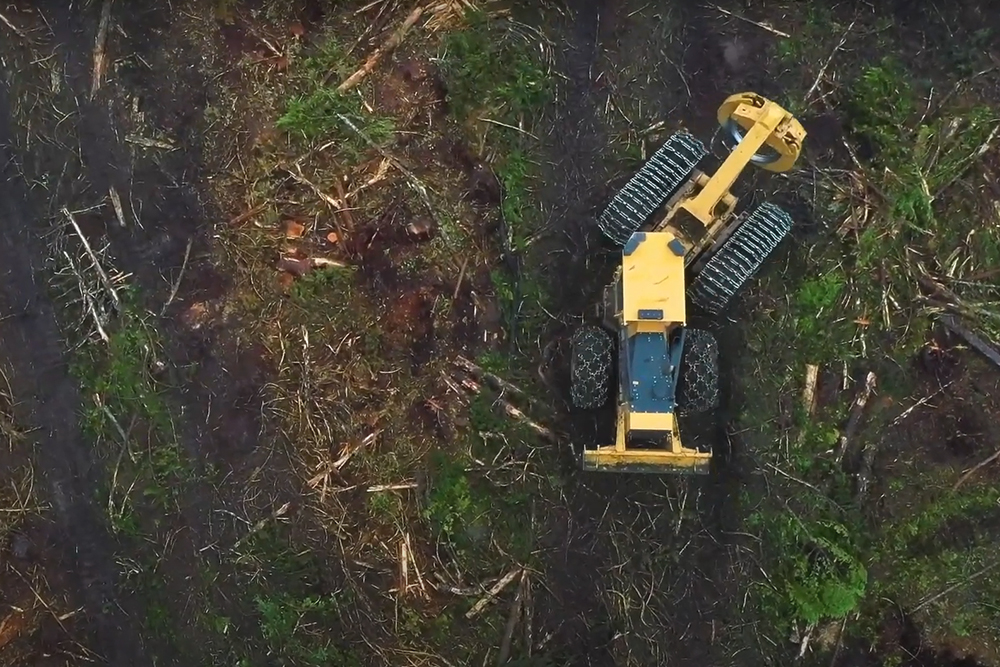
Skidder Operator
A skidder operator plays many roles throughout the lifecycle of the forest. In fact, we use a skidder with a different attachment in our site prep operations as we prepare to replant. They can also be used in road building. During a logging operation, a skidder is able to move between rows of trees and move one or more logs at a time, bringing them to an open area where a loader operator will sort and prep them for log trucks.
Skidders come with many different types of attachments used in logging. A log grapple, cable winch, crane boom and other accessories may be used to grasp and hold on to logs as the skidder drags them out of the forest. Different types of skidders are designed to handle different terrain: some have rubber tires, while others operate on tracks that can handle slopes and looser soils.
“We purchased a six-wheel-drive skidder from Tigercat years ago and I brought that to the attention of a couple landowners,” says Roger Smith, who owns R.L. Smith Logging in Elma, Washington. “The skidder, outfitted with tracks, can cover a larger area of land without damaging the soil bed and causing erosion the way a more traditional skidder would.”
Loader Operator
During a harvest operation, the loader operator may process more than 1000 trees in a single day. A skilled loader operator is incredibly important, as this individual will make decisions about how to cut and market a log in a matter of seconds. Large, high quality logs will be prepared to be delivered to mills that make large items like lumber and utility poles. Lower quality logs will be prepared for mills that will process them into mulch or pulp.
Loader operator Leroy Frazier, also of Williston Timber, explains: “They can pick up the log, swing it round. If there are vines, you can twist the vines out, throw them away.”
Leroy also operates a saw from the cab of the loader. Through a series of buttons, he can place the log where he wants to cut it, then use another button to lower the saw onto the log. Loader operators may have other tools at their disposal, such as a “delimber,” which removes the branches from a log, or a “debarker,” which clears off some of the bark.
He sorts the prepared logs by product type because different products will be delivered to different customers. Finally, he loads the logs onto log trucks, ensuring they are securely in place and ready for transport to the mills.
How do you become a heavy equipment operator in logging?
To become a heavy equipment operator, you will typically need to be 18 or older, have a high school diploma and sometimes a commercial driver’s license (CDL). Many logging contractors offer on-the-job training to potential equipment operators. Some vocational schools also offer training to become a heavy equipment operator in the logging industry.
Skills needed to operate logging machinery include an acute level of care when it comes to the safety of yourself and others on the job site, attention to detail and flexibility. For example, you may be asked to work on a different machine or to assist with fixing equipment depending on what happens during the course of the day. It’s also important to be able to make decisions quickly and have the physical stamina and strength to operate large machines on often rough terrain.
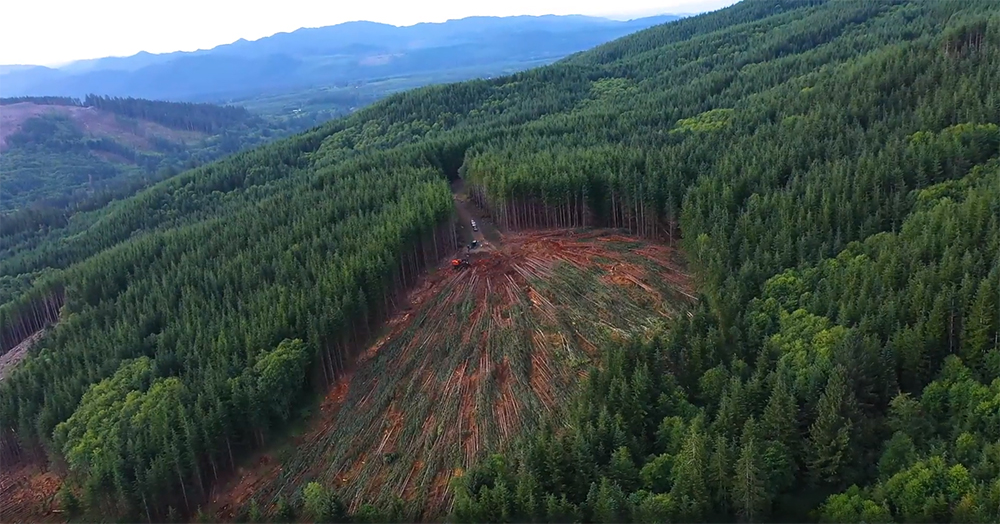
Steep Slope Logging Careers
Chainsaw Operator
There are different challenges when it comes to logging on steep slopes. As explained above, a winch assist machine can sometimes be used to allow a logger to work from the safety of the cab of a feller buncher. Other times, loggers have to work on foot, using chainsaws to fell trees. Chainsaw operators must go through thorough training in using, safely operating and maintaining their chainsaws. This training may be provided on the job.
Yarder Operator
If the ground is too steep for a skidder, a cable system is used to move the logs uphill to a landing area, also called a “yarding” area. This technique has improved logger safety and prevents erosion and sedimentation into waterways.
This popular method for moving logs off steep slopes has many names: tower logging, skyline logging, cable logging and cable yarding are among the most-used, as we explain in our article, How tower logging works.
A yarder operator runs the cable system, also known as a yarder, through hand and foot controls. This operator works within the cab of the yarder at the landing above the logging operation. Safety again is the priority: lifting massive logs off the ground and transporting them in the air above a mountain is no small undertaking!
In addition to having the skills to communicate with the crew on the ground throughout the day, a yarder operator may need to know how to troubleshoot if the machinery breaks down.
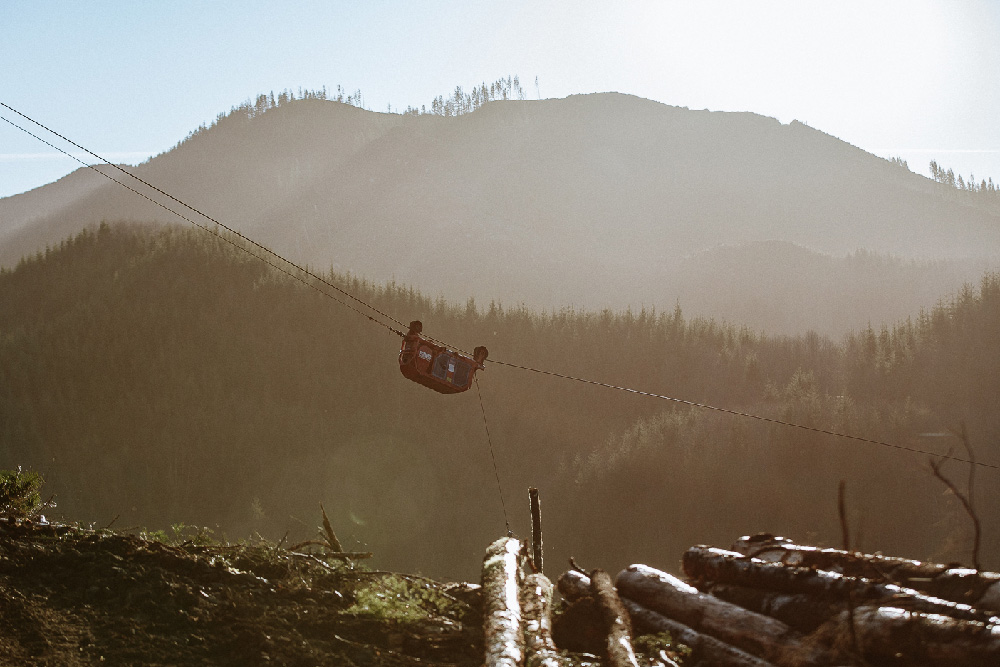
Choker Setter
How do the logs get attached to the cable? Loggers called “choker setters” attach the logs to a choker (or babbitt), which is a separate, vertical cable that hangs from the carriage that moves up and down the horizontal cable. It secures the logs with an interlocking mechanism called a bell and knob. (The bell-shaped side is like a keyhole, while the knob is like a key).
Ed Bryant, owner of ENB Logging in Chehalis, Washingtron, refers to choker setters as “the guys out in the brush who make things happen.” In addition to choker setter, they have also traditionally been called rigging slingers and rigging men
Hook Tender
A hook tender is the person in charge on a steep slope logging operation. This position supervises and coordinates the work on the site, including overseeing the setup and management of the cable system and the work done on the ground by the crew. A hook tender must have a thorough understanding of all that goes on in a logging operation and be able to communicate safely guidelines as well as expectations with the crew.
How do you become a steep slope logger?
Steep slope loggers typically need a high school degree or equivalent. Sometimes CDLs are also needed. On-the-job training is typically offered, and at times training courses are also available through local logging and forestry organizations. Some vocational schools also offer training relating to the logging industry.
Skills needed to be a steep slope logger mirror those listed above for heavy equipment operators: a deep sense of dedication to safety for yourself and others, attention to detail, flexibility, physical stamina and the ability to make decisions quickly.
Log Truck Driving Careers
Log truck drivers may either own their own truck and operate their own business out of that truck, they may work for a mill, or they may work for a company that owns multiple log trucks. A business may specialize solely in log trucks, or it may do logging operations across the board.
A log truck driver will drive to a forest site to pick up a load of logs. This may involve driving into the woods to the area where the loader has loaded the log trailer. In other cases, the trailer may be driven to a pickup site closer to the road, where the log truck driver will then pick it up and transport it to the mill.
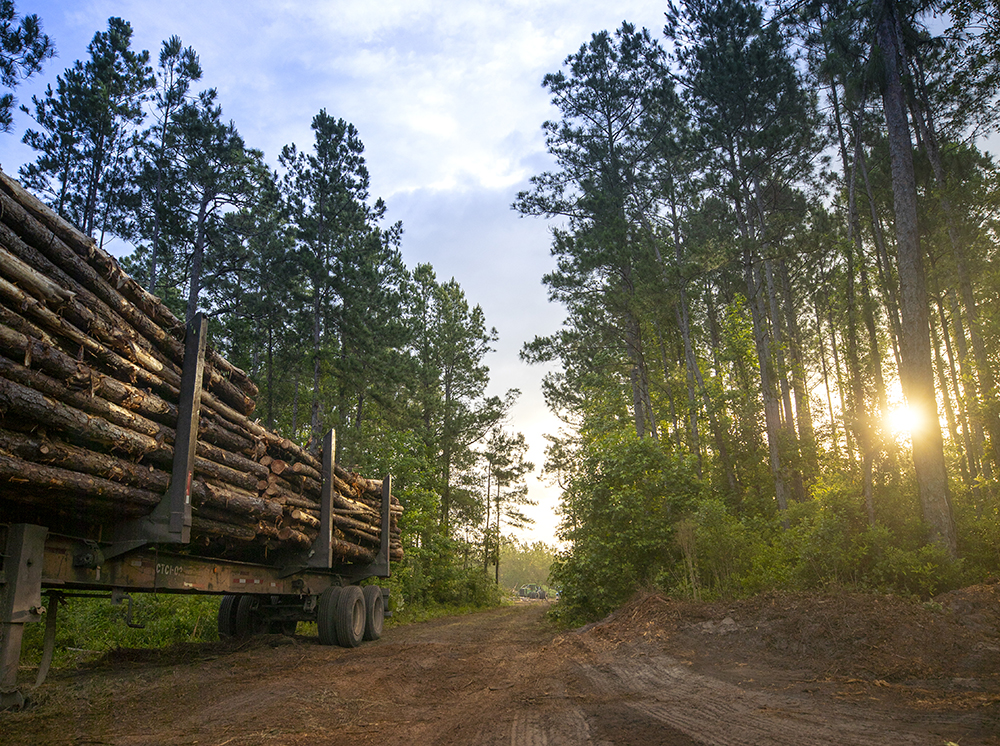
A log truck driver always inspects the trailer to ensure all logs are secure and that the trailer will be safe on roadways before getting on the road. Some loose branches may need to be trimmed, and flags may need to be added to some of the logs at the back of the trailer to ensure other drivers don’t get too close.
A log truck driver will need to be knowledgeable about driving regulations for log trucks. Certain roads may not be accessible to log trucks, such as busy streets or major highways.
Once the log truck driver travels to the mill or other customer, he or she will wait in a line of other log trucks to be weighed on the mill’s scale. Many loggers start their day very early to reduce the amount of time they will have to wait at the mill. Once the logs are weighed, the driver will receive a ticket confirming the weight of the logs, which will determine what will be paid for them. Then the logs are removed from the trailer.
How do you become a log truck driver?
A log truck driver needs to have a high school diploma or equivalent as well as a CDL. Typically, drivers will need to have several years of experience driving heavy trucks before they can qualify to drive a log truck. After that, many companies will provide additional on-the-job training if they hire you to drive a log truck for them. Some vocational schools also offer log truck driving programs.
Skills a log truck driver needs to have include an ability to map and plan routes as well as logistics in picking up and delivering logs. A log truck driver will have to be aware of road closures, weather hazards and other conditions that could impact a day’s work. A log truck driver needs to have a good understanding of driving safety including defensive driving and must have the stamina for what are sometimes long waits in the vehicle at the mill.
Logging Company Owner Careers
Logging company owners may have just a few employees or a large team with a fleet of trucks and equipment. They may operate equipment themselves, or they may strictly manage their company. Many logging company owners inherit their business after first working in lower level positions within the company. These businesses often pass through families for generations.
While not required, it is helpful to take at least some business courses in order to start and manage a logging company. In addition, a vast knowledge of logging laws and regulations, safety guidelines, and general best practices is critical.
It’s also important to know how to find and hire good employees.
“I think a lot of the older guys have a lot of pride in what they do, myself included,” says Roger of R.L. Smith Logging. “When we’re hiring younger guys,what we try to instill in them is have pride in your job. Also, I like to hire guys that have a smile on their face and they enjoy their job. That means all the difference in the world on good production.”



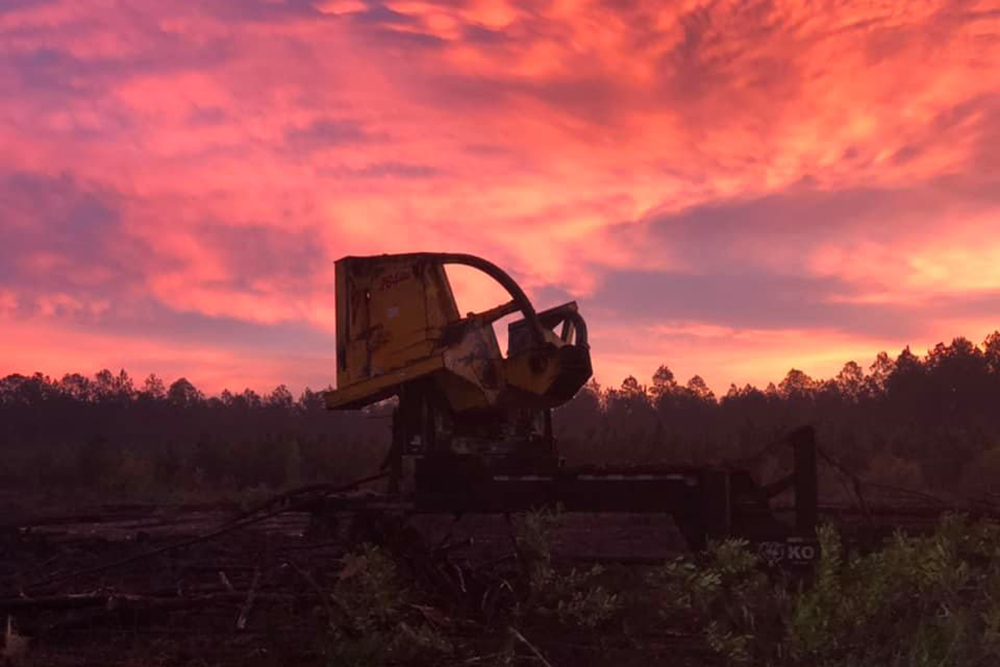


Leave a Comment